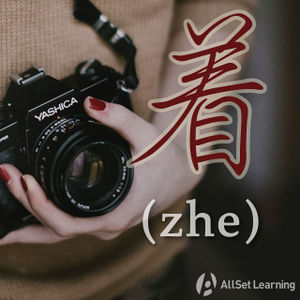Difference between revisions of "Using "zhe" when "verbing away""
| Line 31: | Line 31: | ||
{{Basic Grammar|着|B2|V + 着 + V + 着|走 <em>着</em> 走 <em>着</em> , 他们 到 家 了 。|grammar point|ASG7AUNJ}} | {{Basic Grammar|着|B2|V + 着 + V + 着|走 <em>着</em> 走 <em>着</em> , 他们 到 家 了 。|grammar point|ASG7AUNJ}} | ||
{{Similar|"Verbing around" with "lai" and "qu"}} | {{Similar|"Verbing around" with "lai" and "qu"}} | ||
| + | {{Similar|Aspect particle "zhe"}} | ||
{{Used for|Expressing duration}} | {{Used for|Expressing duration}} | ||
{{Used for|Indicating conditions}} | {{Used for|Indicating conditions}} | ||
Revision as of 03:35, 29 July 2013
-
Level
-
Similar to
-
Used for
-
Keywords
A repeated verb followed by the particle 着 (zhe) is used to show that an action has be repeated for a period of time, and as a result a new situation has arisen which the speaker wishes to comment on.
Structure
Verb + 着 + Verb + 着 + comment
Examples
- 说着 说着 我 就 发现 自己 也 糊涂 了。I was talking and talking, and then I confused myself.
- 我 今天 一直 都 在 看 语法 的 书, 看着 看着 ,就 睡着 了。Today, I was constantly studying the grammar books. As I was studying, I fell asleep.
- 我 在 北京 的 胡同 里 走 着 走 着 就 走丢 了。As I was walking in one of Beijing's back roads, I got lost.
See also
Sources and further reading
Books
- Integrated Chinese: Level 2, Part 2 (pp. 193-4) →buy
- 40 Lessons for Basic Chinese Course (基础汉语40课下册) (p. 385)→buy



